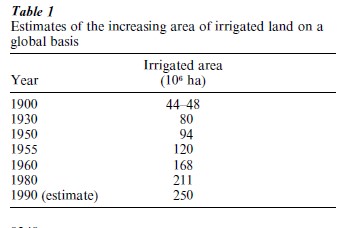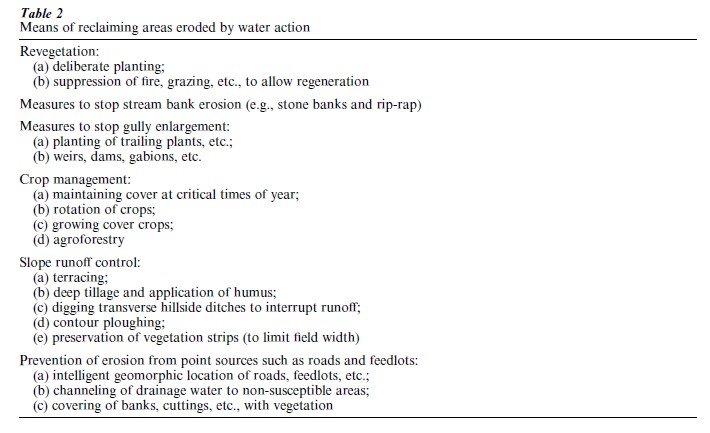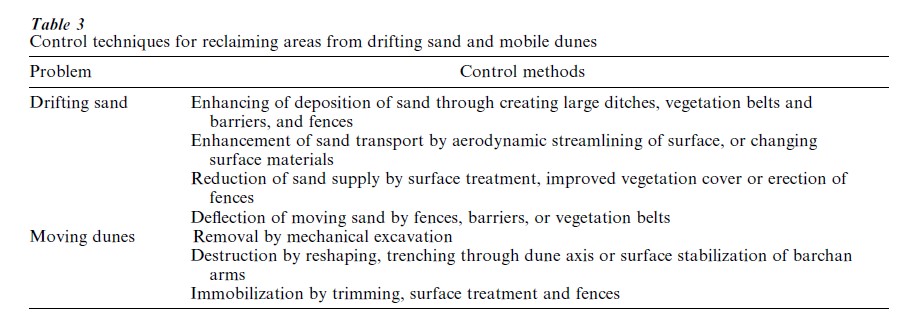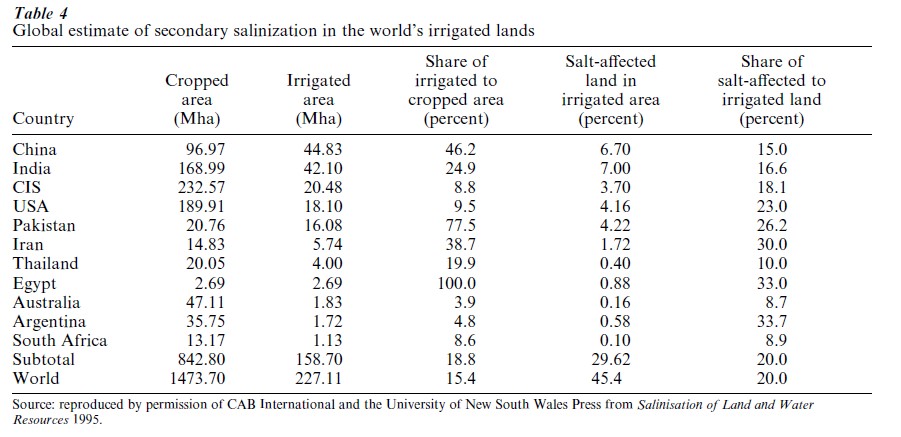Sample Land Reclamation Research Paper. Browse other research paper examples and check the list of research paper topics for more inspiration. If you need a research paper written according to all the academic standards, you can always turn to our experienced writers for help. This is how your paper can get an A! Feel free to contact our custom research paper writing service for professional assistance. We offer high-quality assignments for reasonable rates.
The term land reclamation can be used in two main ways. On the one hand it can be used to describe actions undertaken by humans to reclaim land from its natural state so that it can be put to some particular use. On the other it is employed to describe ways of restoring ecosystems that have been degraded by human actions.
Academic Writing, Editing, Proofreading, And Problem Solving Services
Get 10% OFF with 24START discount code
1. Reclamation From a Natural State
The first of these uses has been employed by historical geographers and others who have sought to investigate the ways in which landscapes have been transformed by human actions. Of particular note here was the work of the American conservationist Marsh (1864). In this magnificent and ground-breaking work he not only described the ways in which humans had modified nature by such actions as deforestation, thereby causing land degradation, but also looked at the ways in which more deliberate actions had been undertaken to transform the face of the Earth. So, for example, in his chapter on ‘The Waters’ he described ‘works of harbour and coast improvement,’ exclusion of the sea by the construction of dikes, as in The Netherlands, the draining of lakes and marshes, the lowering of the levels of lakes, surface and under-draining of soils, irrigation of the world’s drylands, and the embanking of rivers to control torrents and inundations. In his chapter on ‘The Sands’ he described the ways in which dunes, such as those of the Landes of Gascony in France, could be controlled, stabilized, and made productive by judicious planting.
Since he wrote, there have been many studies that have followed up this theme of the deliberate transformation of landscapes, including notable studies of the draining of the marshes of the Fenland in East Anglia, England, by Darby (1940), or the draining of the Somerset Levels in western England by Williams (1970). Humans have exerted great energy to ‘reclaim’ certain landscapes, be they the industrious Dutch who have built large tracts of their country by protecting it from the sea, the land-hungry inhabitants of Hong Kong who have built out their high rise urban structures on ‘reclaimed land,’ the engineers who have lined the Mississippi River with enormous embankments, or the hydraulic engineers who constructed the massive canal systems that irrigate the plains of the Indian subcontinent and elsewhere (Table 1).

A particularly important type of land reclamation is the transformation of landscapes from their forested state into other types of land cover and land use (e.g., agriculture and pastoralism). This is one of the oldest forms of reclamation, which dates back to the Mesolothic and Neolithic. More recent examples include the medieval clearances of forest from central Europe, the removal of native vegetation from extensive tracts of North America since European settlement, and the current spasm of clearance of the rain forest. On a global basis over a third of the earth’s land surface has been converted to ‘domestic’ use.
2. Reclamation Of Degraded Land
The second meaning of the term is one that has come into prominence as it has become apparent that there is an increasing need to restore or reclaim land that has been degraded by human activities. Human actions frequently have rendered land unproductive or have reduced its ecological value. Examples of such actions include the destruction of the land surface by mining activities, the pollution of the ground and of water resources by various types of chemical or biological substances, the salinization of soil and water as a result of irrigation or land clearance, soil erosion resulting from over-cultivation or over-grazing, the loss of woodlands, the spread of desert conditions (desertification), and habitat destruction and associated reduction in biodiversity. The significance and extent of many of these problems is now well known (see, e.g., Turner 1990, Goudie 2000, Thomas 1956, Mannion 1998) and had led to an increasing concern with means of environmental management (Owen and Unwin 1997), of which land reclamation is a part. Connected with land reclamation is the concept of ecological restoration—meaning the desire to return an area to its original state prior to degradation so that it becomes a fully-functioning, self-sustaining ecosystem. Not all land reclamation, however, goes as far a being full ecological restoration. To give an example; an old mining waste tip may be reclaimed for agricultural use rather than being restored as a fully natural and pristine forest. Likewise, a badly salinated and waterlogged tract of irrigated land may be reclaimed for agriculture by the installation of an effective network of drains, but is not restored to its original state as a tract of desert. Concepts and means of land restoration and reclamation have been reviewed by Harris et al. (1996).
3. Examples Of Land Reclamation And Restoration
In order to give an indication of the nature and scope of land reclamation and restoration techniques, it is appropriate to provide a small selection of examples. The first of these is to look at means of rehabilitating land that has been damaged by soil erosion. Morgan (1995) provides a review of some of the methods that have been employed, and draws upon the experience that was developed not only by pioneers like Bennett (1939), who established and directed the US Soil Conservation Service from the 1930s to deal with some of the problems encountered in the Dust Bowel years, but also upon experience gained in the degraded lands of Africa and Asia. The prime means of controlling erosion (Table 2) is to undertake revegetation, either by deliberate planting or by the suppression of fire and grazing to allow regeneration. Associated with this is the need for crop management, whereby an adequate level of plant cover is maintained at critical times of year, rotation is practised, and intercropping is employed. It is also necessary to prevent erosion from point sources like roads and tracks by the careful use of drains, to protect stream banks with structures like gabions, to stop gully encroachment by means of weirs and dams, and to control slope runoff by terracing, deep tillage, and the application of humus, the digging of transverse ditches to interrupt runoff, contour ploughing, and the preservation of grass strips to limit field width. Wind erosion requires its own techniques (Table 3), including the planting of shelterbelts or windbreaks and the preservation of soil moisture levels (Watson 1990, Middleton 1990). Because of the widespread and detrimental effects of soil erosion, attempts at its control have a very long history, and in Africa, for example, there are many indigenous strategies that have proved remarkably effective (Reij 1991) even in the face of quickly rising human population levels (Tiffen et al. 1994). There are also many examples of soil conservation measures that have been successful in reversing degradation, as is made evident, for instance, by the studies of Trimble in the US (Trimble and Lund 1982).

Another example is the reclamation of land that has been afflicted by salinization and waterlogging as a result of the introduction of irrigation. This is a problem that affects large tracts of land in the Indus valley of Pakistan, the Tigris–Euphrates system of Iraq, and many other potentially productive arid areas (Ghassemi et al. 1995) (Tables 4 and 5).

The third example one can give is the reclamation of contaminated ground. The reclamation methods available broadly divide into two types: traditional methods of isolation, covering or removal of contaminated materials; and decontamination techniques. Among the means of achieving isolation are capping the deposits to reduce rainfall infiltration, the installation of vertical barriers to minimize migration of contaminated waters, the digging of diversion trenches to intercept water and/or pollutants from contaminated ground, horizontal barriers beneath the deposits to prevent downward leaching, and break layers of coarse stones to prevent upward movement of contaminants by capillary action. Decontamination techniques can be divided broadly into thermal, separation, solidification stabilization, chemical, and biological methods. Once the ground material has been treated in these various ways it will be necessary to revegetate the site, though this is not always a simple process, because the materials may be poor or lacking in nutrients, there may be some residual level of toxicity, the materials may have adverse moisture conditions (i.e., too wet or too dry), they may be compacted, or they may be too unstable to permit vegetation to be established. For all these reasons reclamation of contaminated land is often a difficult and lengthy business that may involve the use of fertilisers and essential minerals, the importing of soil, the installation of drains and mulches, stabilisation with geotextiles or by landscaping (e.g., terracing), and an understanding of the best pioneer plants to employ. Leguminous plants, for example, may be especially useful.

4. A Multidisciplinary Endeavor
What these three examples indicate is that land reclamation is a multidisciplinary endeavor that requires the involvement of a wide range of disciplines. Anthropologists may be required to understand and explain social mores, environmental historians may be needed to ascertain what conditions existed before degradation occurred, plant scientists will be required so that appropriate planting strategies are followed, engineers will be required to undertake some of the technical tasks that are necessary, geomorphologists may be useful for providing insights into appropriate terrain shapes, hydrologists will be needed to deal with water flows, and soil scientists will use their expertise to make sure that soils are used in an effective manner. Connected with this is the observation that land reclamation is not merely a technical matter that can be achieved solely by engineering solutions. Much land reclamation involves human decisions (e.g., deciding not to use too much irrigation water, deciding to introduce crop rotations or to plant and maintain shelterbelts, deciding to reduce grazing pressures, deciding to what uses contaminated land should be put, etc.). It is, therefore, an area where social and physical scientists need to come together.

Bibliography:
- Bennett H H 1939 Soil Conservation. McGraw Hill, Chicago
- Darby H C 1940 The Draining of the Fens. Cambridge University Press, Cambridge, UK
- Ghassemi F, Jakeman A, Nix H A 1995 Salinisation of Land and Water Resources. CAB International, Wallingford, UK
- Goudie A S 2000 The Human Impact on the Environment, 5th Blackwell, Oxford, UK
- Harris J A, Birch P, Palmer J 1996 Land Restoration and Reclamation. Longman, Harlow, UK
- Mannion A M 1998 Global Environmental Change, 2nd edn. Longman, Harlow, UK
- Marsh G P 1984 Man and Nature. Scribner, New York
- Middleton N J 1990 Wind erosion and dust storm control. In: Goudie A S (ed.) Techniques for Desert Reclamation. Wiley, Chichester, UK, pp. 87–108
- Morgan R P C 1995 Soil Erosion and Conservation, 2nd edn. Longman, Harlow, UK
- Owen L, Unwin T 1997 Environmental Management: Readings and Case Studies. Blackwell, Cambridge, MA
- Reij C (ed.) 1991 Sustaining the Soil. Indigenous Soil and Water Conservation in Africa. Sustainable Agriculture Programme of the International Institute for Environment and Development, London
- Rhoades J D 1990 Soil salinity—causes and controls. In: Goudie A S (ed.) Techniques for Desert Reclamation. Wiley, Chichester, UK, pp. 109–34
- Thomas W L (ed.) 1956 Man’s Role in Changing the Face of the Earth. University of Chicago Press, Chicago
- Tiffen M, Mortimore M, Gichuki F N 1994 More People, Less Erosion: Environmental Recovery in Kenya. Wiley, Chichester, UK
- Trimble S, Lund S W 1982 Soil conservation and the reduction of erosion and sedimentation in the Coon Creek Basin, Wisconsin. US Geological Survey professional paper 1234
- Turner B L (ed.) 1990 The Earth as Transformed by Human Action. Cambridge University Press, Cambridge, UK
- Watson A 1990 The control of blowing sand and mobile desert dunes. In: Goudie A S (ed.) Techniques for Desert Reclamation. Wiley, Chichester, UK, pp. 35–85
- Williams M 1970 The Draining of the Somerset Levels. Cambridge University Press, Cambridge, UK




